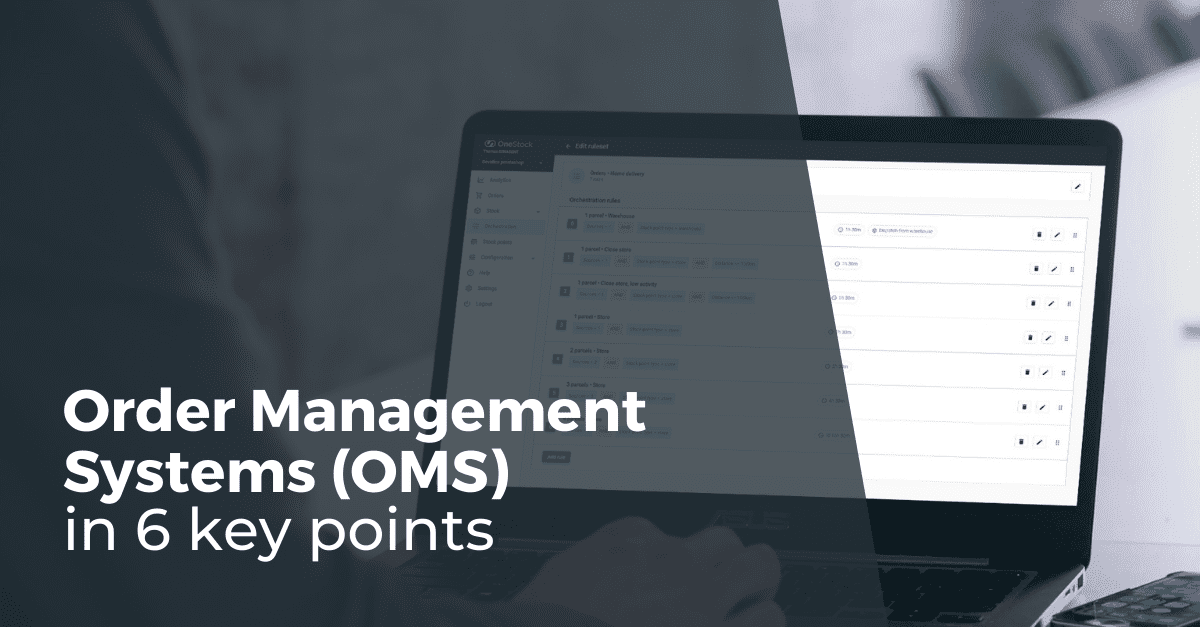
Order Management Systems (OMS) in 6 key points
The Order Management System (OMS) is much more than stock management software. With its focus on the customer, an OMS is an ideal solution for retailers wishing to implement an effective omnichannel strategy.
How exactly does the Order Management System work? Let’s see in just 6 key points!
1. Stock unification
This is the basic principle of the OMS. It’s the foundation that makes it possible to deploy omnichannel solutions such as Ship from Store, Click & Collect, Order in Store, etc. The Order Management System unifies all available stock within the retailer’s network, taking into account the:
- Store(s)
- Warehouse(s)
- Supplier(s)
- Marketplace(s)
- Reseller(s)
- Future stock…
This unified stock is then made available across all sales channels. Result: more potential sales thanks to more references available for sale.
2. The customer order
An omnichannel retailer receives customer orders online and from its stores.
Thanks to the unification of stock, the OMS allows flexibility between online and offline orders.
Let’s imagine that an item is no longer available in a particular store. Thanks to an OMS, it’s possible for the store associate to order it from another store. This service is called Order in Store.
To summarise, rather than losing a sale, the Order Management System allows the retailer to find an alternative solution.
3. Order orchestration
Orchestration is the processing of the order by the Order Management System. During this process, the solution selects the most relevant sales outlet.
Of course, the order orchestration is configured according to the retailer’s business requirements.
Various scenarios are possible, such as:
- Preference is given to warehouse stock for an item in high demand
- Choosing a local store’s stock for Click & Collect
- Preference is given to supplier stock for orders shipped abroad
Carrier management is also handled within the solution.
By intelligently orchestrating the different stock available, the OMS generates a higher turnover and optimises all logistics flow.
4. Order payment and confirmation
Payment management, which is a very important element, is carried out very simply – the OMS communicates via API with the company’s payment operator(s). The main payment methods are taken into account: EPTs or online payments. Once the transaction has been validated by the payment platform, the OMS confirms the order and assigns it an identification number which will be used for tracking.
5. Item shipment
In order to satisfy customers as much as possible, multiple delivery methods are taken into account: drop off point, home delivery, Click & Collect etc…
From a technical point of view, the OMS communicates via API with the Warehouse Management System (WMS) to connect the stock point with the carriers eligible for the customer order.
The OMS supports the order pickers efficiently, for example by allowing them to easily edit the transport labels (shipping and return).
Thanks to the generated tracking number, the customer can track his parcel precisely.
6. Returns management
Returns management is a key issue for retailers. Customers now
want to return a product from anywhere (store, post office, by post, etc.), which makes logistics flows more complex.
The OMS efficiently manages reverse logistics in an omnichannel context.
The software allows you to:
- Quickly trigger the refund in line with the initial payment method
- Intelligently put returned items back into stock rotation according to the rules defined by the store
- Replenish stores that are out of stock of certain items


